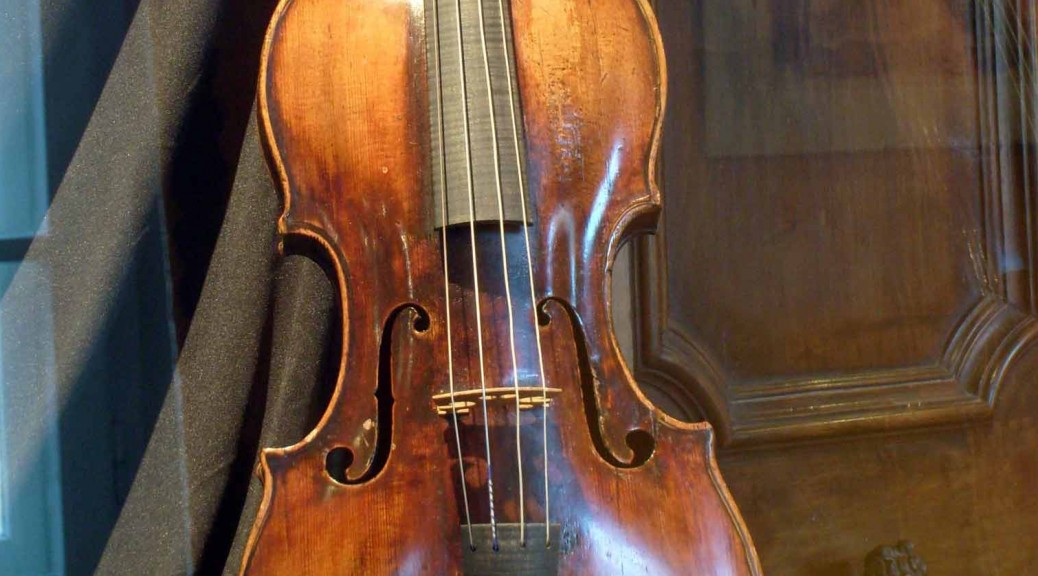On August 24, 1787, just fourteen days after completing what is perhaps Mozart’s most famous composition, “Eine Kleine Nachtmusik,” K. 525, Mozart entered a new composition into his personal catalog of works which has come be be known as his “Violin Sonata in A Major,” K. 526. This piece was completed just before the completion of his opera “Don Giovanni,” K. 527. Like the “Divertimento” in E-flat major, K. 563, it might seem easy to dismiss a mere violin sonata as only a “trivial” work, but also like the “Divertimento,” this is a true little-known masterpiece. It was completed in between two much more famous masterpieces by Mozart, and therefore receives little attention, yet the treasures which lie within this remarkable work are well worth discovering for all who care to listen.
I have never heard anyone refer to any of Mozart’s violin sonatas as a truly “great” Mozart work in the same way we consider the great “Kreutzer” Sonata, Op. 47 of Beethoven. This is understandable to a point because of all of the great operas, symphonies, and concertos of Mozart which tend to outshine so many of his “smaller” works. I do however feel it is too easy to dismiss or take for granted what Mozart accomplished in this A major sonata. It is true this sonata does not have the same emotional turmoil as Beethoven’s sonata, but Mozart’s music never does since it is never about emotion, even if able to evoke emotion. Mozart’s sonata also does not make the degree of technical demands Beethoven’s does, and Mozart’s music in general does not always “grab” us the way Beethoven’s music tends to, but draws us in with its unparalleled perfection of structural beauty, melody, and elegance.
The opening movement is written in sonata form in 6/8 time. It begins with an immediate duet in harmony between the violin and piano, and alerts us from the very beginning this is a sonata for the equally important violin and the piano. There is a true integration of the instruments in this work , and is not merely a piano sonata with violin accompaniment, although that is the way Mozart entitled his violin sonatas – as sonatas for piano with violin. The violin and piano are given equal melodic and motific, virtuosic treatment, trading melodies and eighth-note, sixteenth-note figurations in a playful dance of assured mastery. Since Mozart was a master performer on both instruments, he was able in this work to perfectly exploit the strengths of both the piano and violin.
In the second movement, Mozart again turns to the sonata form, opening with the piano in an unaccompanied melody in octaves which will later be picked up by the violin. There is continual interplay and trading of melody and accompaniment between the piano and violin, and beyond the notes there is a depth in this movement which touches on the dark side as well as the light, but is never personal as in Beethoven’s work. If emotion is evoked in Mozart, it is on the deepest levels of those extremely rare “ah-ha” moments we have when we can see the oneness and beauty of the universe in all things – the good as well as the bad – the darkness as well as the light. It reflects both sides while itself transcending duality. It is more than any other music, the sound of now… the present moment.
The final movement has to be one of the most remarkable rondos Mozart even composed. It is difficult to know exactly where we are rhythmically as the piece opens breathlessly with rapid eighth notes in the piano running underneath the violin melody which is playfully syncopated and fun. It is a tour de force for both the piano and violin, making great technical demands on both players in a way quite different than Beethoven makes in his “Kreutzer Sonata.” There is a beautiful melody marking the “B” section of the rondo, first played by the piano and later picked up by the violin to slow down the perpetual motion just a bit to allow us to catch our breath, but then it is off again to the races as Mozart returns to the “A” theme of the rondo. He continues to return to the “A” theme throughout the movement each time after visiting “new” colors of sound – sometimes in the minor, sometimes in the major, eventually ending with a breathless coda, in a joyous and triumphant ending in the spirit somewhat reminiscent of the “Rondo Alla Turka” movement of Mozart’s “Piano Sonata in A Major,” K. 331.
It is so easy – perhaps too easy to take Mozart for granted. His music sounds so inevitable, so “easy,” so perfect, we cannot imagine it any differently than it is. That is why it is often difficult to appreciate the incredible skill and hard work Mozart had to put in to his creations. Perhaps that is one reason why some would call Mozart “less serious” and “less deep” than other composers like Beethoven, where the compositional struggle tends to more readily be heard in the music itself, and often bears itself out in Beethoven’s working manuscripts which frequently do not resemble fair copies, but elaborately worked-out and almost illegible sketches. While it is true Mozart’s music lacks the element of personal emotional reflection in the way of the romantics, Mozart’s approach to composition and his dedication to the perfection and integrity of his craft are no less serious and committed than any other composer in history. However, unlike many composers, Mozart did not take life or himself quite as seriously, leaving us with a strange sense of wonder at how he was able to accomplish the miraculous seemingly as easily and as naturally as taking a breath… That ease, purity, and inevitability is Mozart.
